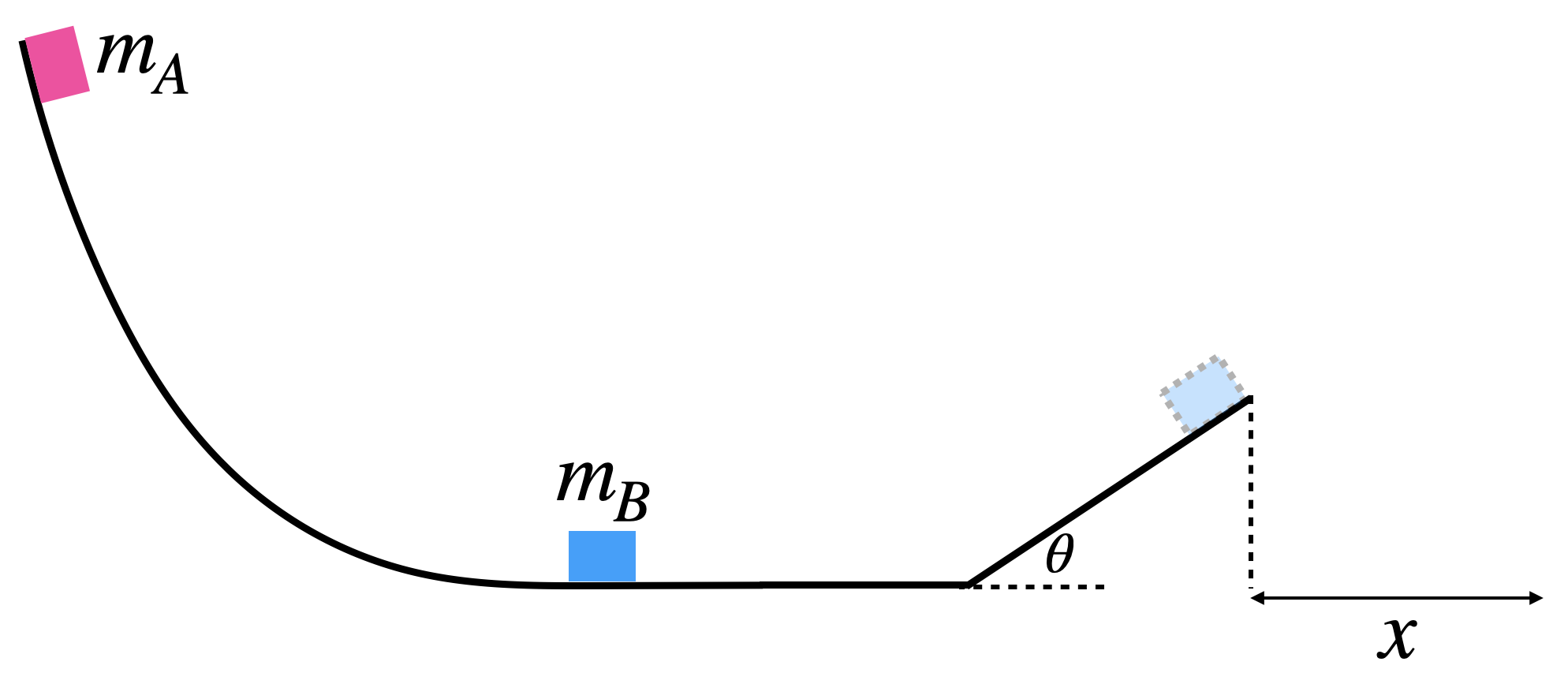Frictionless Ski Jump Collision#
A ski jump consists of a hill, a short flat section, and a ramp. The hill has height of \({{ params.hill_h }}\) \(\rm{m}\) and the ramp has a height of \({{ params.ramp_h }}\) \(\rm{m}\), making an angle of \(\theta = {{ params.ramp_angle }}^\circ\) with the horizontal.
Block A of mass \(m_A = {{ params.mA }}\) \(\rm{kg}\) is released from rest at the top of the frictionless hill and slides down to the frictionless short flat section, where it undergoes a perfectly elastic collision with Block B of mass \(m_B = {{params.mB }}\) \(\rm{kg}\). This causes Block B to slide up the frictionless ramp and undergo projectile motion, before landing a horizontal distance \(x\) away from the ramp at the same height as the short flat section.

Part 1#
What is the speed of Block B immediately after the perfectly elastic collision?
Answer Section#
Please enter in a numeric value in \(\rm{m/s}\).
Part 2#
What is the horizontal distance that Block B travels after it goes off the ramp (\(x\))?
Answer Section#
Please enter in a numeric value in \(\rm{m}\).
Attribution#
Problem is licensed under the CC-BY-NC-SA 4.0 license.

